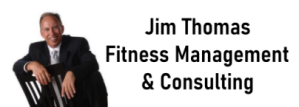When launching a new gym or boutique studio, many entrepreneurs focus primarily on membership acquisition, class offerings, and brand-building. However, there’s a hidden risk that often remains under the radar—the risk of liquidity problems. Even gyms that are profitable can fail if they cannot maintain financial flexibility in an uncertain market.
In today’s economic climate, the most resilient gym businesses aren’t necessarily the biggest or the most popular; they are the ones that are the most liquid—the ones that can move fast, adapt quickly, and survive when capital gets tight. In this article, we will explore how a lack of liquidity poses a silent threat to gym startups, why financial agility is crucial, and what steps gym owners can take to safeguard their business against financial instability.
1. Understanding the Hidden Risk of Liquidity
Liquidity refers to the ability of a business to meet its short-term financial obligations. In the context of a gym business, liquidity is essential for covering operational expenses such as payroll, equipment maintenance, utilities, and lease payments. It also gives a gym the flexibility to capitalize on new opportunities or pivot when market conditions change.
The problem arises when gym businesses, even profitable ones, have a cash flow issue. A business can be generating revenue, but if that revenue isn’t readily accessible due to poor cash flow management or inefficient financial planning, it becomes challenging to operate smoothly. This is where many gyms falter—especially in uncertain markets or when unexpected costs arise.
2. The Risks of Overextending During Startup
Many gym owners make the mistake of overextending themselves early on by investing heavily in high-end equipment, expansive facilities, and aggressive marketing campaigns before ensuring they have sufficient liquidity. When capital is tied up in these long-term investments, a gym may find itself unable to cover short-term expenses or unable to respond to emerging challenges.
For instance, a gym might encounter unexpected costs—equipment repairs, higher-than-expected insurance premiums, or a sudden downturn in memberships due to external factors like a recession or a public health crisis. Without sufficient liquid capital, a gym may be forced to take out high-interest loans, rack up credit card debt, or even miss payments, which can quickly spiral into a larger financial crisis.
3. The Role of Liquidity in Resilience
While many gyms aim to grow as large as possible, the true resilience of a gym business lies in its ability to quickly adapt to changing conditions. Liquid capital enables a gym to:
-
Seize New Opportunities: Whether it’s expanding into a new market, offering a new class, or acquiring essential equipment on a sale, liquid capital allows a gym to act quickly when opportunities arise. A well-capitalized gym can make strategic investments or adjustments when competitors may struggle to do the same.
-
Survive Downturns: Economic recessions, changes in consumer behavior, or sudden regulatory changes can hurt gym membership numbers. Liquidity gives gym owners the flexibility to weather these storms, rather than needing to make drastic cuts to survive.
-
Negotiate Better Terms: With liquidity in hand, gym owners are better positioned to negotiate favorable lease terms, vendor agreements, and other contracts. Being able to pay bills on time also improves your creditworthiness, which can help lower future borrowing costs.
-
Pivot and Innovate: In times of uncertainty, the ability to pivot quickly is paramount. Whether a gym needs to shift to a hybrid model or invest in digital solutions, liquidity enables gym owners to innovate and adjust their operations without being financially constrained.
4. How to Build Financial Liquidity for Your Gym Business
Building liquidity is about balancing investments, minimizing risk, and ensuring that your cash flow remains robust. Here are some strategies that can help gym owners maintain financial flexibility:
4.1. Prioritize Cash Flow Management
Understanding where money is coming from and where it’s going is essential. Implementing a cash flow management system can help gym owners predict cash shortages and plan ahead. Establishing clear financial forecasts and regularly reviewing your cash flow statement ensures that you are aware of potential cash shortages before they become a crisis.
-
Set Aside Emergency Funds: Just as individuals keep emergency savings, gym businesses should set aside a portion of their profits in a reserve fund. This emergency fund can cover operating expenses during slow months or in the event of unexpected expenditures.
4.2. Minimize Long-Term Debt
While gym startups often require financing, it’s important to avoid overleveraging yourself with long-term debt. Too much debt can result in cash flow problems down the road, particularly if the business hits a rough patch. Instead, focus on building a manageable debt load and prioritize paying off high-interest loans.
4.3. Be Smart About Equipment and Facility Investments
Gym owners often fall into the trap of over-investing in high-end equipment or expansive real estate without fully considering the long-term financial commitments. Instead of committing all available capital upfront, consider leasing equipment or opting for a smaller, more cost-efficient space to start. This way, you preserve your liquidity and avoid tying up too much capital in physical assets.
4.4. Diversify Your Revenue Streams
Gym businesses can benefit from multiple revenue streams. Rather than relying solely on membership fees, explore additional income sources such as personal training, group classes, wellness programs, or even retail sales (e.g., supplements and apparel). Diversification not only increases cash flow but can also provide a cushion in case one revenue stream experiences a dip.
4.5. Establish Strong Vendor Relationships
When cash flow is tight, negotiating favorable payment terms with suppliers and vendors can make a big difference. Building relationships with your vendors can result in discounts, extended payment terms, or even better service. Having the ability to delay payments or negotiate on price can ease financial strain in challenging months.
4.6. Keep Operational Costs Lean
Efficient operations are key to maintaining liquidity. Automate processes where possible, reduce overhead costs, and avoid unnecessary expenditures. By keeping your expenses in check, you ensure that more of your revenue is available to address cash flow needs.
4.7. Seek Alternative Funding Options
If you encounter a cash flow shortage, don’t hesitate to seek alternative funding options. For gyms that are already profitable, revenue-based financing or short-term business loans can provide quick access to cash without giving up equity in the business. However, it’s crucial to ensure that the terms are favorable and that the debt is manageable.
5. Why Capitalizing on Liquidity Is More Important Than Ever
The gym industry is subject to many external factors—economic shifts, seasonal changes, and competitive pressures. By focusing on liquidity, gym owners ensure they are prepared for the unexpected. It’s not about being the biggest gym in town; it’s about being the gym that can move quickly, adapt, and survive when challenges arise.
In an uncertain market, the ability to make quick decisions and take immediate action is a key differentiator. Gym owners who focus on liquidity are not only preparing for short-term obstacles but also positioning themselves for long-term success.
Conclusion: Protect Your Gym’s Future by Building Resilience Through Liquidity
The most successful and resilient gym businesses are those that prioritize financial flexibility. By managing liquidity carefully, maintaining healthy cash flow, and avoiding over-leveraging, gym owners can ensure that their businesses remain adaptable in a rapidly changing market. Even profitable gyms can crash if they don’t have the financial runway to weather the storm.
Focus on liquidity today, and your gym will be ready for whatever tomorrow brings—whether it’s a new opportunity or a market challenge. Keep your business agile, ensure financial resilience, and you’ll be one step ahead in the competitive fitness industry.
Need help building systems, improving your facility, or turning around your gym business? Contact Jim here.

Looking for Financing Options?
Take your gym business to the next level. Click here to explore tailored financing solutions, or contact us directly at 214-629-7223 or via email at jthomas@fmconsulting.net. Prefer to dive right in? mconsulting.net/Apply now or book an appointment for a personalized consultation.
Are you ready to sell your gym? Have a specific Gym Sales & Acquisitions question? Message me here and let’s chat! Or call/text at 214-629-7223.
The Best Gym Billing Software. Choosing the Right Gym Software Company: Key Elements for Independent Gym Owners and Entrepreneurs. Click here for more information.
Insurance Made Simple for Gym Owners & Personal Trainers
Protect your business and your future. Discover custom insurance solutions here.
Custom Apparel Without the Hassle
Get premium custom apparel for your gym with no inventory required. Click here to get started.
Is Your Gym in Need of a Boost?
Whether you’re facing declining sales, need a fresh marketing strategy, require a complete business turnaround or ready to start a new gym, we’re here to help. With over 25 years of industry expertise, we offer a free initial consultation to explore solutions tailored to your unique challenges. Don’t wait—contact Jim Thomas at 214-629-7223, or gain immediate insights from our YouTube channel. Connect with us on LinkedIn. EMAIL NEWSLETTER. Join for FREE.
Meet Jim Thomas
Jim Thomas is the Founder and President of Fitness Management USA, Inc., a premier management consulting, turnaround, financing, and brokerage firm specializing in the leisure services industry. With over 25 years of hands-on experience owning, operating, and managing fitness facilities of all sizes, Jim is an outsourced CEO, turnaround expert, and author who delivers actionable strategies that drive results. Whether it’s improving gym sales, fostering teamwork, or refining marketing approaches, Jim has the expertise to help your business thrive. Learn more by visiting his website or YouTube channel.






